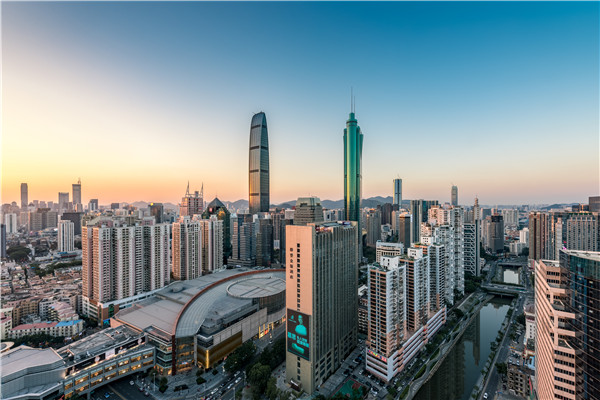In China's Silicon Valley, talent fosters growth


When the Shenzhen special economic zone was established, the city had about 300,000 residents. Those with educations above secondary school numbered only 4,000.
Forty years after the launch of China's reform and opening-up, the metropolis is home to more than 5 million workers officially designated as high-level talent, as well as 100,000 professionals who have returned from overseas.
Pursuing and treasuring skilled technicians and R&D talent has played - and will continue to play - an essential role in the reform pioneer's success, observers say.
Cheng Yimu came to Shenzhen in 1991 to pursue his dream after giving up his "iron rice bowl", a term referring to job security. Cheng had a position in Beijing at a national authority over the mechanical and electronics industries.
"Since the late 1980s, many of my colleagues went to Shenzhen believing in its huge potential," Cheng said.
Asked if he was sure about the transfer before his hukou, or household registration, was stamped, he said, "Just do it."
In the city, he is part of the founding team of the Huaqiang North Electronics Market, one of the country's best-known electronics hubs.
The emerging opportunity was a result of a local move to recruit talent nationwide, one of the first in the country, to China's Silicon Valley.
Top workers flew south to take their chances at making a fortune, injecting added force into the thriving manufacturing industry.
"Talent and reform are complementary to each other," said Hu Gang, a professor at Jinan University's School of Public Administration.
The large amount of talent swarming in provides strong momentum to drive Shenzhen's economic reform, he said.
The need for top talent intensified a decade ago when local authorities launched a comprehensive high-level talent identification mechanism, one of the first in the country. It has been continually optimized over the years since.
A series of preferential policies eased life for talented individuals, including financial support, housing subsidies, employment for spouses and education for children.
As a result, more than 5.1 million highly talented people - mostly with a secondary school or higher education - had jumped aboard by the end of 2017. Meanwhile, Shenzhen's GDP grew to about 2.2 trillion yuan ($317.5 billion), the third-highest in China.
What attracted them was not only preferential policies, said Chen Ning, who has a PhD in artificial intelligence. He returned to China from the United States under the Peacock Project, a program Shenzhen introduced in 2010 to attract overseas professionals.
He said what he values the most is what the city provided for him to try out his startup's prototype product - a visual intelligence system. Thanks to the successful pilot project, his product has now been launched in more than 20 cities.




































